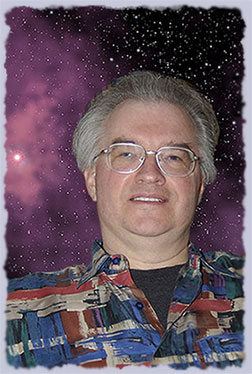Artist Statement

My love of digital art stems from a life long love of science and technology, especially computer technology and image processing. I have been experimenting with photography and computer graphics for more than 20 years and have experienced first hand many of the revolutionary changes brought about by advances in computer and digital technology. It was while pursuing my Masters Degree in Computer Science that I had the good fortune to participate in the first computer graphics class offered by the Art Department at Northern Illinois University.
The techniques I use in the creative process depend on where I start. Some of my work begins as a blank canvas in a 2D graphics program. Other pieces are initially created as a scene in a 3D graphics program and subsequently manipulated in a 2D graphics program. Others begin as either digital or traditional 35mm photographs that are subsequently manipulated in either a 2D or 3D graphics environment - or both. The art that I create can be categorized from a production aspect as falling into the following categories:
- art created entirely using 2D graphics software
- art created entirely using 3D graphics software
- art created using both 2D and 3D graphics software
- art created using 2D and/or 3D software with significant photographic elements
- art created from photographs, either digital or film
The art I produce is a reflection of my personal interests and tastes. I have long studied and lectured in the areas of science, astronomy, planetary geology, space exploration, computer programming, computer graphics, and space art. I have also had an ongoing fascination with the beauty of various geometric forms, especially fractals and algorithmic art.
Being a digital artist, I do not subscribe to the traditional art school theory that an artist should confine themselves to one particular subject and style. I view the digital medium as being a liberating force and that as a digital artist, the artistic possibilities should be explored to the fullest extent possible.
No generation is interested in art in quite the same way as any other; each generation, like each individual, brings to the contemplation of art its own categories of appreciation, makes its own demands upon art, and has its own uses for art.
T.S. Eliot, "The Use of Poetry and the Use of Criticism"